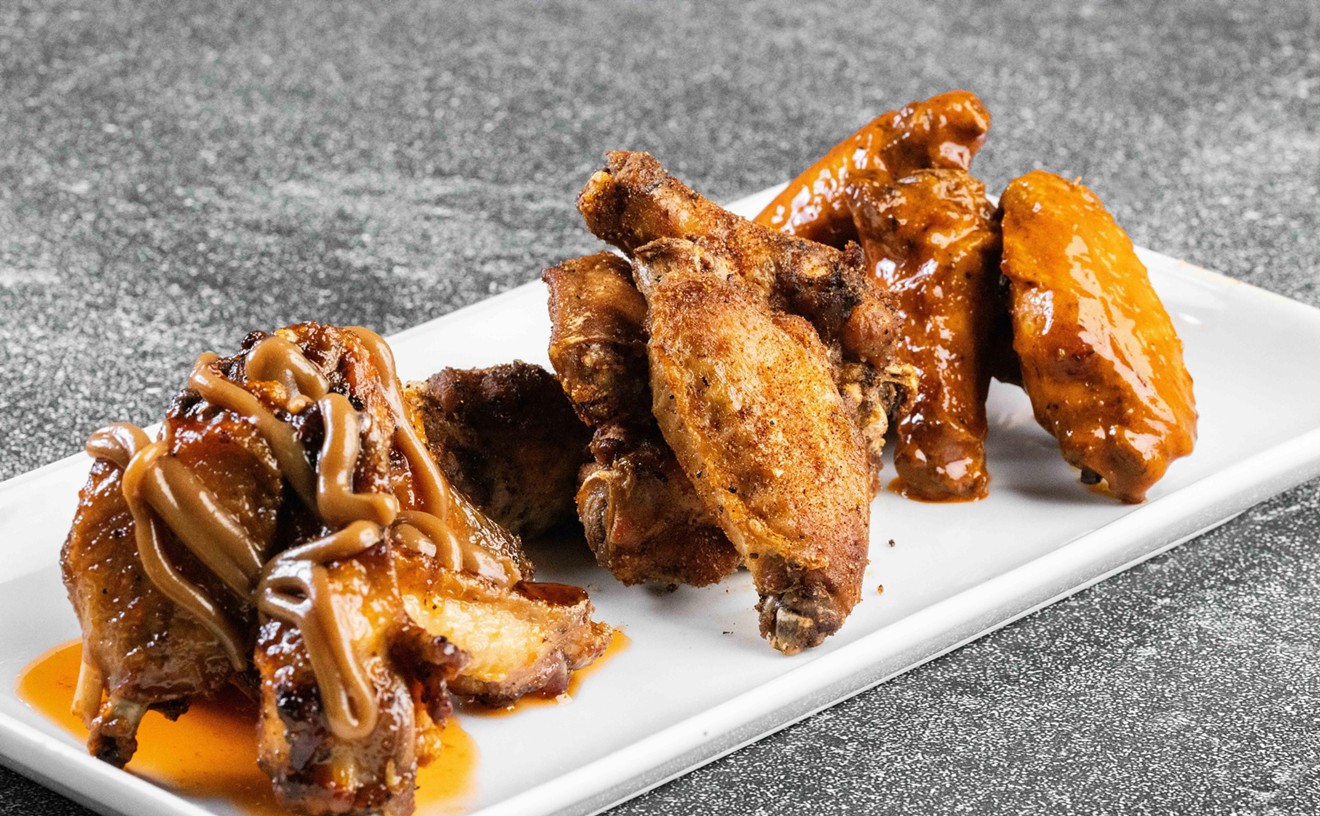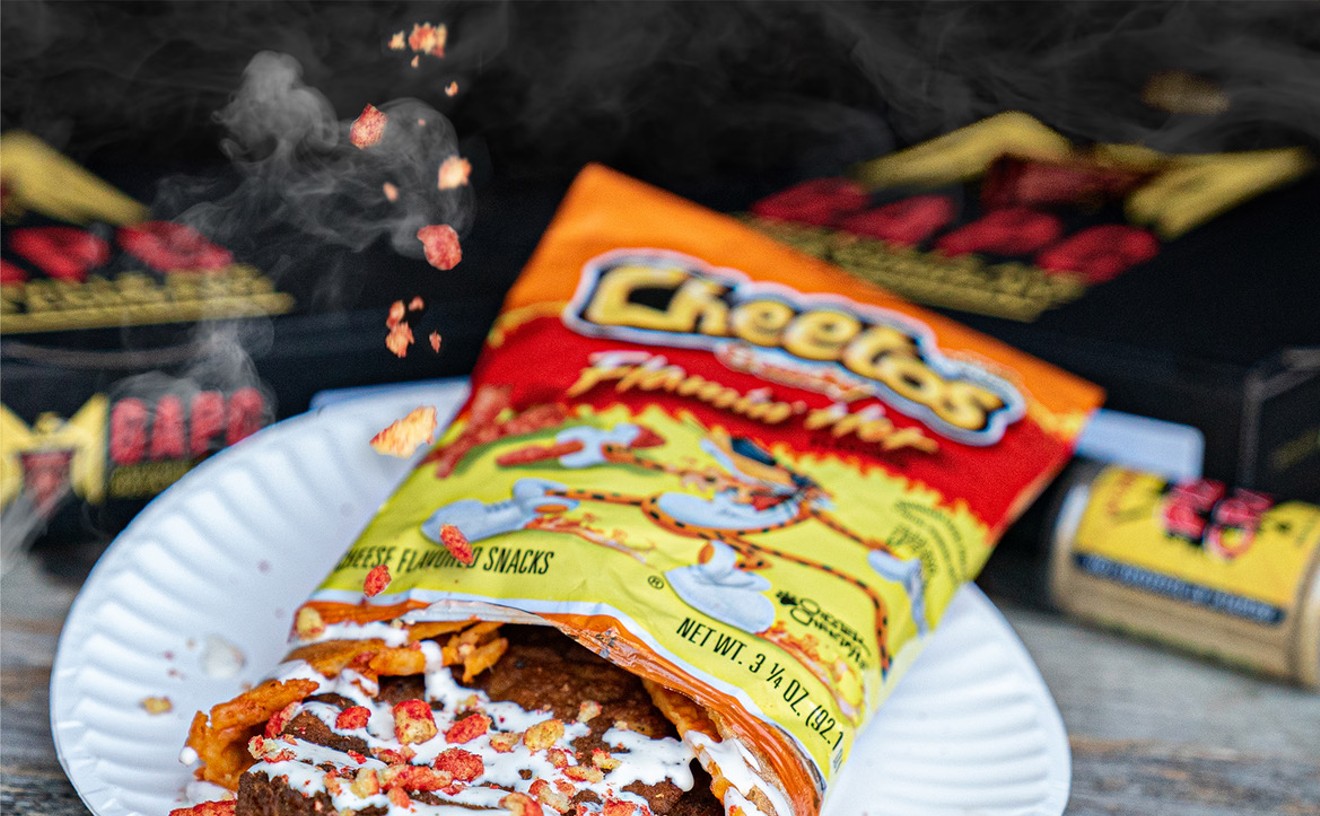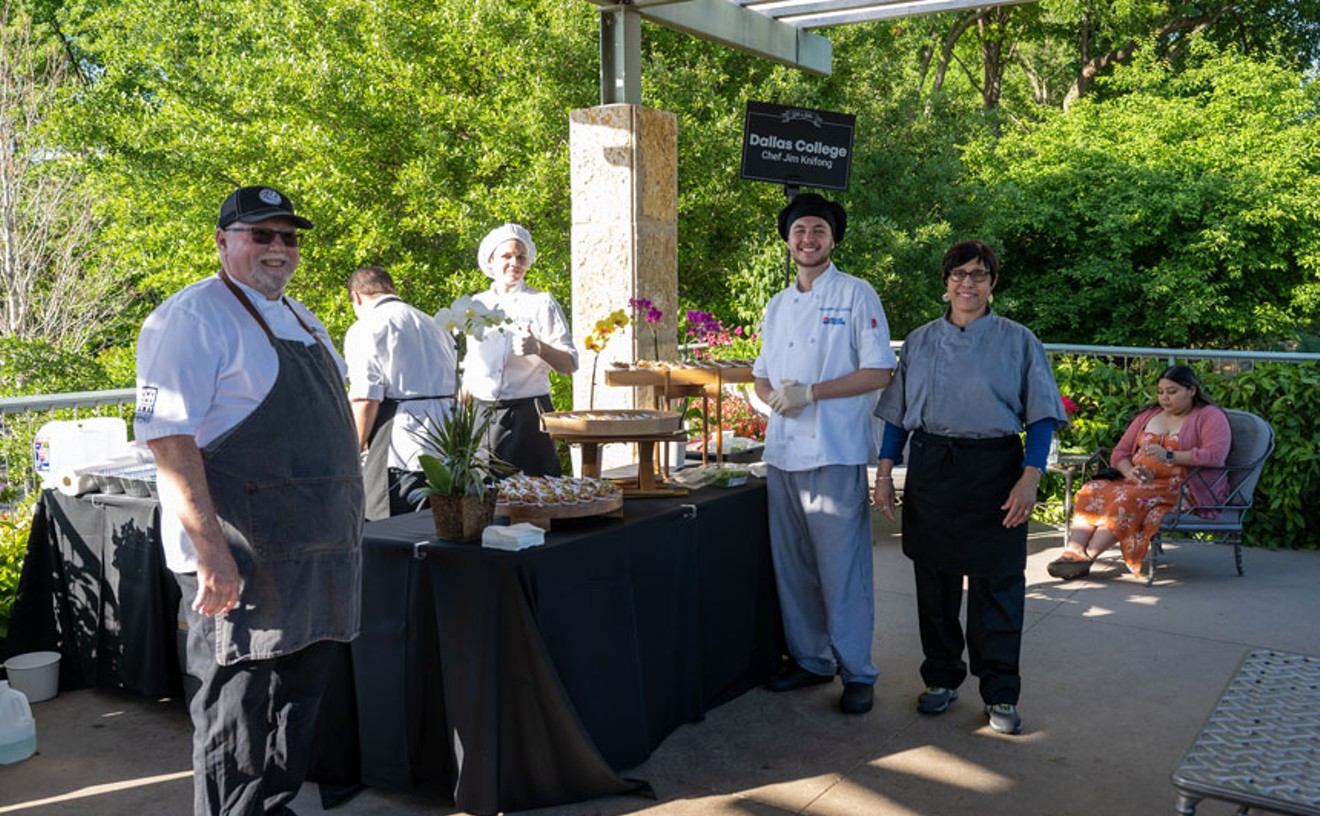It's 1 p.m. when I receive a phone call from an anxious voice on the other end of the line, asking me where I am. It's Sky Kuo, owner of Plano's Noodle House, and he's wondering if I am still coming by to snap pictures in the restaurant's kitchen. I assure him I am en route and politely recall that our appointment was scheduled for 1:30 p.m. Yes, he remembers, but he's got 2,000 more dumplings to make and he'd like to move the process along.
It's an understandable frustration. After all, he's been up since 7 a.m. getting his son ready for school, then making the daily trek from Bedford to Plano to work what will be a 14-hour shift. Normally, it's "only" a 12-hour day for the chef/owner at his restaurant, but today is when the week's dumplings and noodles are made from scratch. It's a twice-a-week ritual and requires all hands on deck. Dads, uncles and staff gather in the kitchen to pour, sift, knead, roll, cut and stuff. By the end of the day, 3,000 dumplings will be made, 200 buns will be formed, and more than 100 pounds of flour will be used for the noodles, alone.
When I arrived at the restaurant, most of the workers were taking a break while awaiting the blogger to show up before resuming their laborious tasks. Sky greeted me and ushered me directly into the back of the kitchen where his father was kneading thick sheets of dough in a massive rolling machine. Seeing the intimidating apparatus at work, I sheepishly asked how much a machine like this would cost and if this was in all Chinese restaurants' kitchens. He wasn't very put off by my questioning and rather proudly revealed that the rolling and cutting machine is one of a kind and was custom-made in Taiwan for his restaurant. Coming from a lineage of noodle and dumpling makers, Sky knew what type of machinery his restaurant would require and had a factory in his home country build him a contraption that his family had long ago patented.
The back room where the rolling machine is housed is also home to a long stainless steel table and a large sifting/mixing mechanism. Twice a week in this room, Sky's father pours hundreds of pounds of flour into the violently vibrating mixer then patiently watches as the flour blends with just the right amount of water -- as measured by eyeballing perfected by years of experience. He plops the resulting large balls of dough onto the rolling machine to be flattened. After numerous sheets of dough are pressed out, a helper lays the sheets in a tall even stack and uses a circle cutter to slice through the layers. The result is thousands of perfectly round dumpling skins. The extra dough is rolled back up, flattened back out, and used for noodles.
The precision exercised in making the dumpling skins is consistent with many other menu items at Noodle House. Unlike the dumplings, the wheat buns -- both meat and veggie versions -- are made on a daily basis, and hundreds at a time. Despite the lofty amount made, each bun, once filled, must be weighed on a scale and must come in at either a little below or over 1 pound, depending on the type of filling. Buns that aren't sold after a couple of days are tossed away.
Which begs the question...
Does Noodle House even have the number of customers to justify all this inventory?
On my few visits to the restaurant, I've never seen what you might call a "crowd." I'd be lucky if there was even one other diner eating in the same vicinity. Sensing my befuddlement, Sky took me to his walk-in freezer to elucidate me on the destiny of all the dumplings. There were racks of loose dumplings ready to be boiled, steamed or pan-fried at immediate bequest of a dine-in-customer, but a great number of dumplings were in clear plastic sealed bags. Sky tells me the majority of his customers are Chinese college students and families who buy these wrapped dumplings to-go, keep them in freezers, and boil the dumplings at home instead of going out for meals during the week.
Still, the best place to enjoy Noodle House's fare is in the restaurant's dining room, where everything is served up the way it was intended to be: the saucers full of already prepped condiments; the steam rising from the bowls of beautifully cooked noodles and dumplings. There's even an apropos glass window showing the goings-on of inside the kitchen. After all, Noodle House is a study of how the simplest ingredients blended with backbreaking work is ultimately what Chinese food is in its most essential form.
Noodle House 3921 W. Park Blvd. No. 200Y Plano










